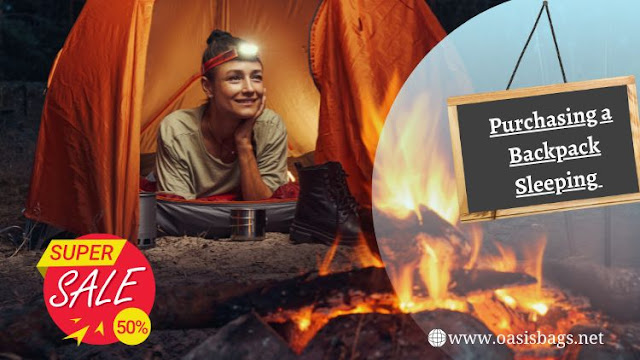Finding the appropriate sleeping bag for you may be the most difficult aspect of gear shopping. Choosing the correct one is crucial for sleeping comfortably in the backcountry—and your bag may save your life in an emergency. But, with so many options available, how can you tell them apart, besides from temperature rating and price? This blog will explain how to assess the major differences between bags from wholesale sleeping bags suppliers so that you can make a better-informed decision.
Tips for Purchasing a Sleeping Bag
Understand your own body. Do you quickly get cold, or are you a furnace? Women are more susceptible to cold than males, and this is due to a basic physical phenomenon: Women's bodies lose heat more rapidly than men's because they have a larger ratio of body surface area to mass. Those ladies feel more at ease in a bag designed specifically for women, which is structured differently than a man's bag and often includes more insulation in regions such as the feet. However, it is also a matter of bodily metabolism.
Flat 40% OFF On Wholesale Rucksack Bags
If you are easily chilled, purchase a bag that is rated 20 to 25 degrees cooler than the lowest temps you want to sleep in outside.
People who don't get cold easily will be more comfortable in a bag rated to within 10 to 15 degrees of the lowest temps you expect to sleep outside in—and potentially even a bag rated exactly around the coldest temperature you'll face, as long as you have extra gear to put on just in case. Being too hot is no more pleasant than being too cold, and carrying a bag that is far warmer than necessary means you're hauling unnecessary weight and bulk.
Down vs. Synthetic Sleeping Bags
Down has typically been warmer, more packable, and lighter than a good deal of synthetic insulation; but, once wet, synthetics kept you somewhat warm, whereas down feathers became almost worthless in retaining heat. The advent of lightweight, high-quality, and compact synthetic insulation, as well as water-resistant down, which keeps its capacity to trap heat even when wet, has blurred the distinctions between down and synthetic.
Down is more durable and packable, so it retains an advantage as the insulation of choice if you don't plan to get that bag wet; and water-resistant down improves your bag's effectiveness in recurring situations when it may become damp, as when condensation builds up on the inside of a tent. Even water-resistant down loses most of its capacity to keep you warm once drenched, and drying out any bag in extended, rainy weather is exceedingly difficult, if not impossible. For long excursions in rainy settings, synthetic insulation is still the best option.
Check Our Wholesale Bags Collection and Get Flat 40% OFF
High-quality down is the warmest, lightest, and most packable insulation available, but it is also the most costly, whereas lower-quality down retains the benefits of down and makes a bag, less affordable, but it is also heavier and bulkier. Manufacturers utilize lower-grade synthetic insulation in low-cost bags, making them heavier and bulkier than superior synthetic and down bags—typically too bulky and heavy for hiking (unless you're on a tight budget and don't mind carrying a large pack).
So the decision between down and synthetic is still based on cost and the chance of your bag becoming wet.
Business owners and retailers make sure to get in touch with popular wholesale backpack manufacturers if you want to expand your store’s collection just before the camping season.
Audio Version: Click Here
Direction: https://g.page/r/CXjd_5FN4C17EBA


Comments
Post a Comment